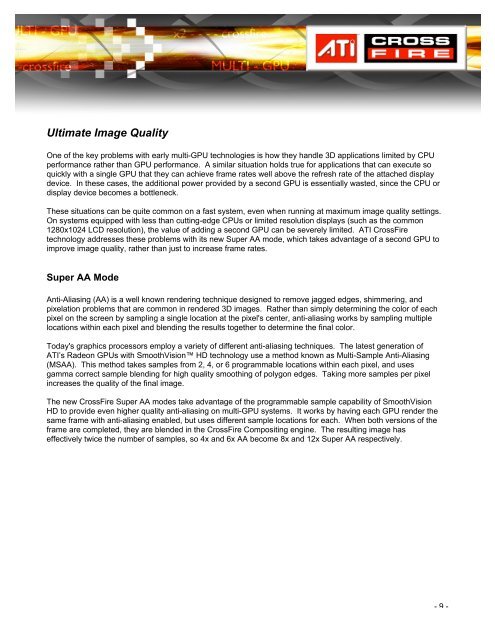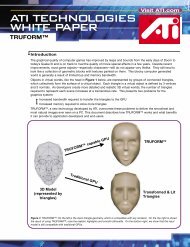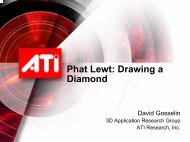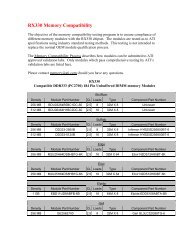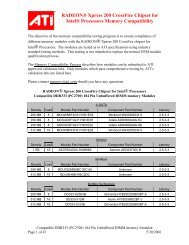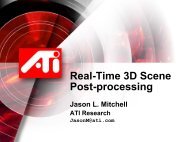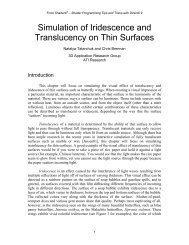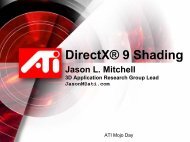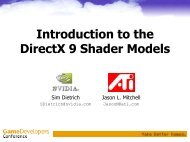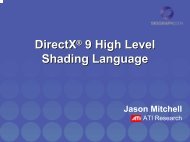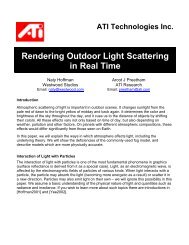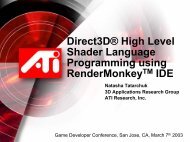ATI CrossFire Technology White Paper
ATI CrossFire Technology White Paper
ATI CrossFire Technology White Paper
Create successful ePaper yourself
Turn your PDF publications into a flip-book with our unique Google optimized e-Paper software.
Ultimate Image Quality<br />
One of the key problems with early multi-GPU technologies is how they handle 3D applications limited by CPU<br />
performance rather than GPU performance. A similar situation holds true for applications that can execute so<br />
quickly with a single GPU that they can achieve frame rates well above the refresh rate of the attached display<br />
device. In these cases, the additional power provided by a second GPU is essentially wasted, since the CPU or<br />
display device becomes a bottleneck.<br />
These situations can be quite common on a fast system, even when running at maximum image quality settings.<br />
On systems equipped with less than cutting-edge CPUs or limited resolution displays (such as the common<br />
1280x1024 LCD resolution), the value of adding a second GPU can be severely limited. <strong>ATI</strong> <strong>CrossFire</strong><br />
technology addresses these problems with its new Super AA mode, which takes advantage of a second GPU to<br />
improve image quality, rather than just to increase frame rates.<br />
Super AA Mode<br />
Anti-Aliasing (AA) is a well known rendering technique designed to remove jagged edges, shimmering, and<br />
pixelation problems that are common in rendered 3D images. Rather than simply determining the color of each<br />
pixel on the screen by sampling a single location at the pixel's center, anti-aliasing works by sampling multiple<br />
locations within each pixel and blending the results together to determine the final color.<br />
Today's graphics processors employ a variety of different anti-aliasing techniques. The latest generation of<br />
<strong>ATI</strong>’s Radeon GPUs with SmoothVision HD technology use a method known as Multi-Sample Anti-Aliasing<br />
(MSAA). This method takes samples from 2, 4, or 6 programmable locations within each pixel, and uses<br />
gamma correct sample blending for high quality smoothing of polygon edges. Taking more samples per pixel<br />
increases the quality of the final image.<br />
The new <strong>CrossFire</strong> Super AA modes take advantage of the programmable sample capability of SmoothVision<br />
HD to provide even higher quality anti-aliasing on multi-GPU systems. It works by having each GPU render the<br />
same frame with anti-aliasing enabled, but uses different sample locations for each. When both versions of the<br />
frame are completed, they are blended in the <strong>CrossFire</strong> Compositing engine. The resulting image has<br />
effectively twice the number of samples, so 4x and 6x AA become 8x and 12x Super AA respectively.<br />
- 9 -


